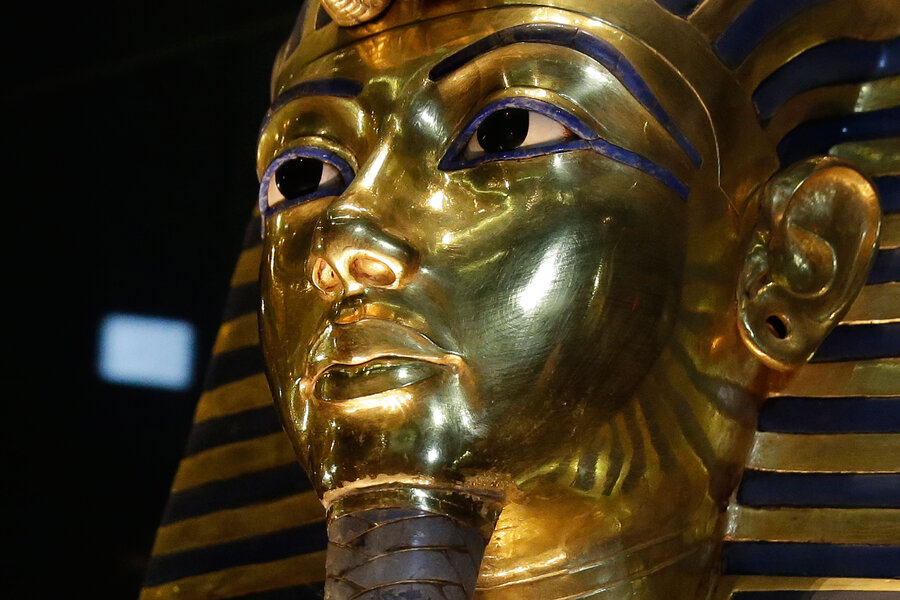King Tut: a ruler swathed in mystery also wielded a cosmic dagger
Loading...
A dagger found in the wrappings of the mummified remains of ancient Egyptian pharaoh Tutankhamun was recently found to have an extraterrestrial origin.
An team of Egyptian and Italian researchers affirmed that the iron dagger, one of two found buried with the ancient ruler’s body, was forged from meteoritic metal. The results were published in May, in Meteoritics & Planetary Science.
The source of King Tut’s blade has long been theorized to be a cosmic object, but the technology to confirm its relation to meteors has until now proven insufficient. Now, using X-ray fluorescence spectrometry, the researchers determined the ornamental dagger’s composition to be mainly iron and nickel with minor traces of cobalt, matching other iron-based meteorites.
“The nickel and cobalt ratio in the dagger blade is consistent with that of iron meteorites that have preserved the primitive chondritic ratio during planetary differentiation in the early solar system,” Daniela Comelli, lead researcher and Polytechnic University of Milan professor, told Discovery News.
The dagger is not the only known ancient Egyptian ceremonial object forged from material that fell from the sky; the researchers reference small beads from Gerzeh, Egypt, that also share what is likely to be meteoritic metal. The presence of more than one such object suggests that people in King Tut’s time appreciated the space rocks, especially for the creation of similar items.
“The study confirms that ancient Egyptians attributed great value to meteoritic iron for the production of precious objects, and the high manufacturing quality of Tutankhamun’s dagger blade is evidence of significant mastery of ironworking already in Tutankhamun’s time,” a University of Pisa release on the study noted.
The presence of meteorite-based objects in Egyptian culture and the ancients’ use of the composite phrase “iron of the sky” also suggests that they may have had an advanced understanding of the source of the metal they valued more highly than gold.
“The introduction of the new composite term suggests that the ancient Egyptians, in the wake of other ancient people of the Mediterranean area, were aware that these rare chunks of iron fell from the sky already in the 13th C. BCE, anticipating Western culture by more than two millennia,” according to the research paper.
The dagger was originally found with King Tut’s mummy in 1925, three years after the discovery of the New Kingdom pharaoh’s tomb by Egyptologist Howard Carter in the Valley of the Kings. That archaeological site remains the subject of intense debate and study, and catapulted the child king contained within to international fame. Tut ascended to the Egyptian throne at age nine, ruling until his early, and as yet unexplained, death at 18.
Aside from its meteor-iron blade, the ceremonial object at the center of the new study has a finely decorated gold sheath and handle, capped with a crystal. The accompanying dagger is fully golden. The iron blade was found on Tut’s mummified abdomen, the other on his right thigh.








